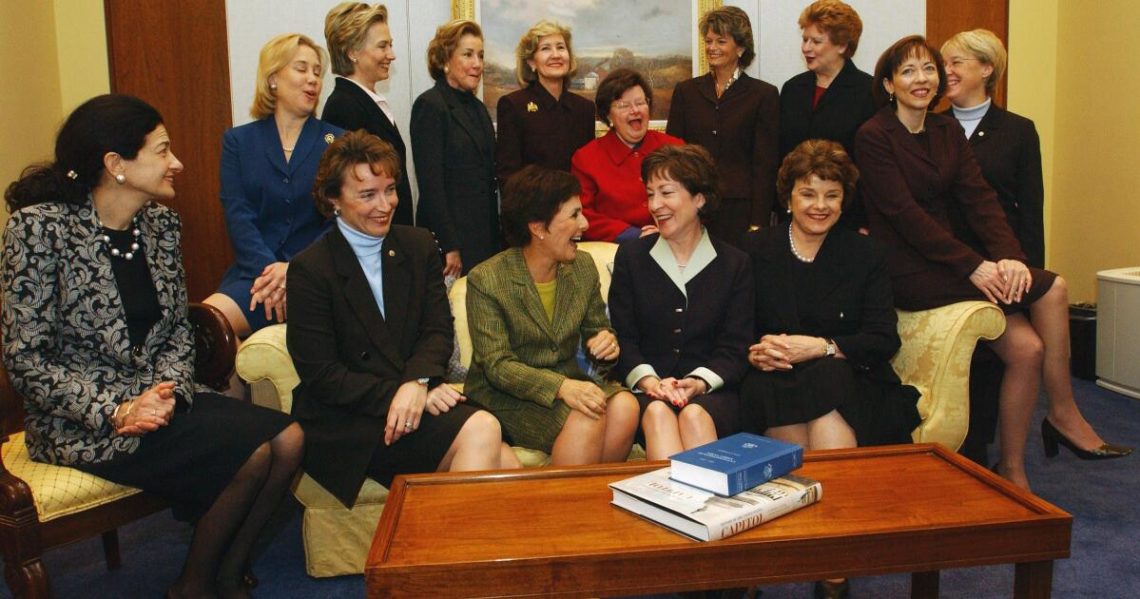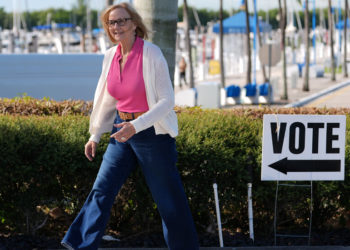In these tough times, as we grapple with saving America itself, it is important to note progress and victories.
This year, for the first time, women make up a majority in California’s state Senate. Across both chambers, 58 women — a record high — are serving. This is just two seats away from gender parity, which would make California the largest global economy — and one of only four U.S. states — to have a legislature that is 50% women. In the Assembly, for the first time, a majority of committees are chaired by women.
For me, it is a great moment. Why? Because it matters who is in the room where decisions are made for our families and our communities. It’s not just about numbers: It’s about policies. When we sit around the table discussing family issues at home, all voices should be represented in order to fully understand each person’s problems and find solutions that will work. That’s just common sense.
The year I got to the U.S. Senate — 1992 — was called “the year of the woman.” I always thought that was a great overstatement because even though we tripled our numbers in the Senate, we only went from two to six! So we were 6% of the Senate, and the media called it a great victory. Don’t get me wrong. It was a start, and now 26% of senators are women. But it has been a slow grind to get here — and that’s still 24 seats short of reflecting the nation’s gender balance. That is why what is happening in California deserves attention.
The Golden State’s path to parity has not been serendipity or an inevitable result of California liberalism. A new report from the Center for American Women and Politics at Rutgers University highlights the strategies that have accelerated women’s numbers in the Legislature. In 2013, women’s representation was tracking to fall to a 20-year low of just 22%. We were moving backward.
One group of activists realized that targeted recruiting of women for specific districts could be a game changer. They started an organization called Close the Gap, and in the decade since, the number of Democratic women elected to the California Legislature has more than doubled, from 23 to 47 seats. California has leapfrogged from 19th to 4th in the nation for women’s state legislative representation.
What made this work? The report gives a lot of credit to early, strategic targeting of winnable districts, personalized coaching for prospective candidates and the amazing network of organizations that work to elect more women.
When I first ran for office, there were few resources for women who wanted to run. In fact, I founded the first chapter of the National Women’s Political Caucus in Marin County before I ran for county supervisor. When I ran for the U.S. Senate, a new group called EMILY’s List helped women candidates access funding like never before. Today, there are multiple groups that provide political training for women and PACs that endorse and fund women candidates. These organizations have compressed the timeline for achieving parity in Sacramento to just over a decade.
When I think about the painfully slow progress toward parity in Congress, I wonder what we can learn from California to close the gender gap nationally.
The Anita Hill hearings in 1991 inspired a generation of women to take political action. The past decade has provided its own powerful moments that have ignited change. From the “Me Too” movement to the devastating overturning of Roe vs. Wade, women are angry. But anger alone is not enough. Real transformation is built through strategy, organizing and a collective commitment to action.
At the heart of this transformation is the power of representation: When women see other women wielding influence and shaping decisions at the highest levels, something clicks, and they begin to believe that change is not only possible but within their reach.
I know the power of representation firsthand. As I traveled the state as a senator, young girls would run up to me after an event and say: “You’re just like me! Maybe I can be a senator someday.” And I don’t think they were just talking about the fact that we were the same height.
Our democracy is a constant work in progress — and we can’t afford to take it for granted. We don’t have the luxury of complacency; we must keep organizing and innovating because, frankly, the stakes are too high. A favorite union-organizing song of mine goes like this: “Freedom, freedom is a hard won thing / You’ve got to work for it, fight for it, day and night for it / And every generation has to do it again.” Past generations have fought for and won big gains; new generations must take up the mantle and push further.
I’m hopeful for a future when every woman, in every community, has the opportunity to shape the decisions that affect her life. The future will be defined by the strong, smart women who step up to run for every kind of political office — and by those who organize over the long term to help them win.
Barbara Boxer represented California in the U.S. Senate from 1993 to 2017. She also served for 10 years in the House of Representatives and as a Marin County supervisor for six years.
The post Contributor: Why California leads the way toward parity for women in elected office appeared first on Los Angeles Times.




